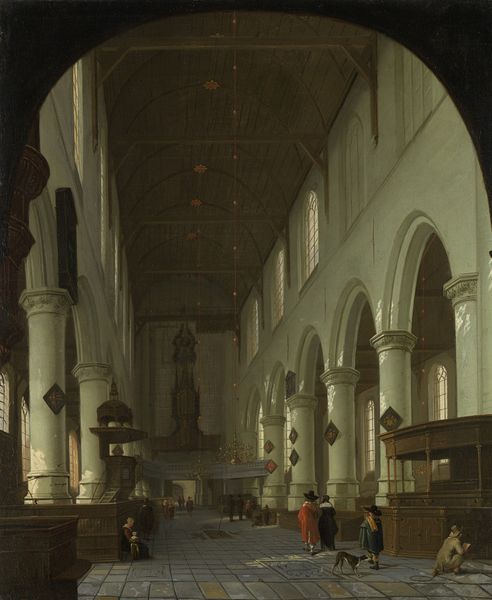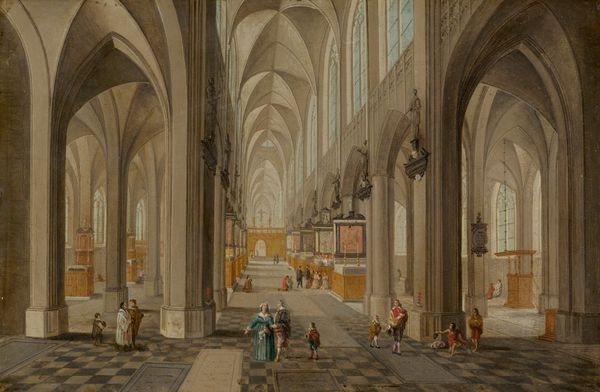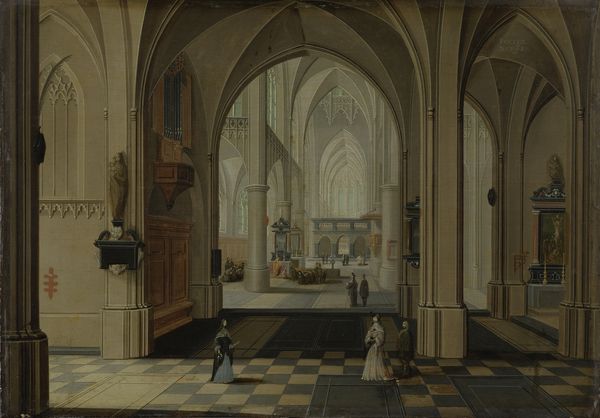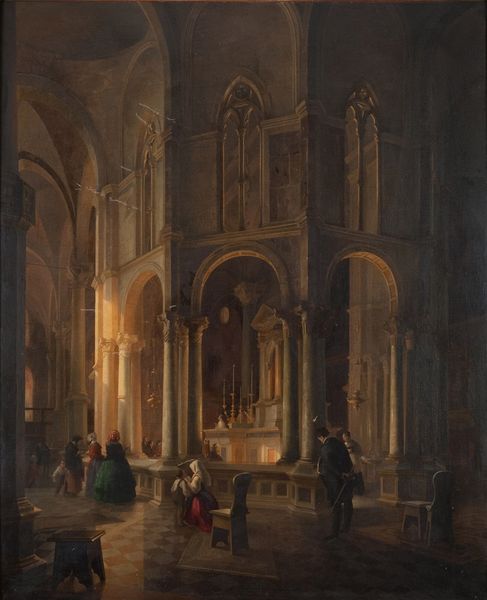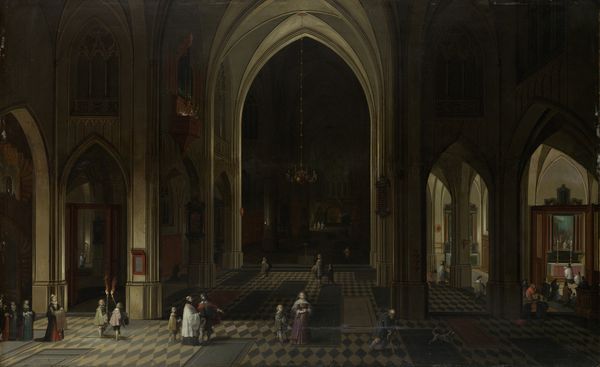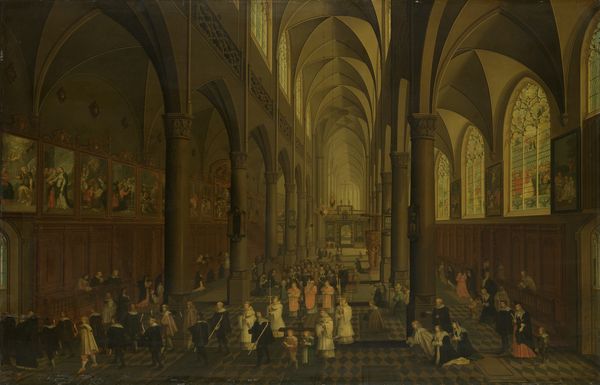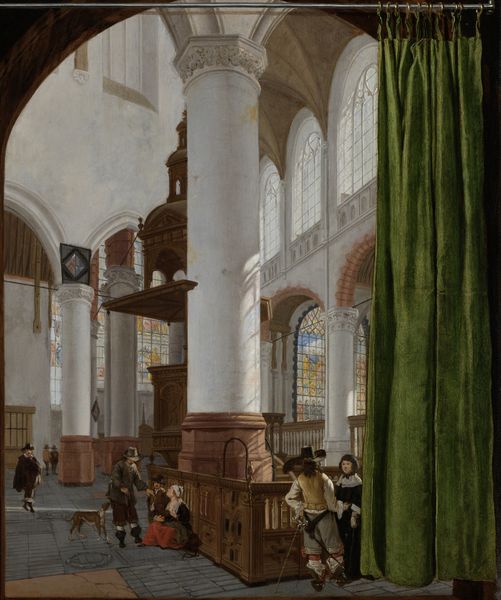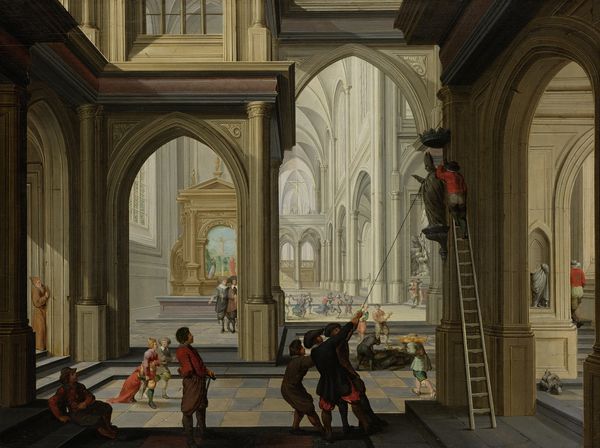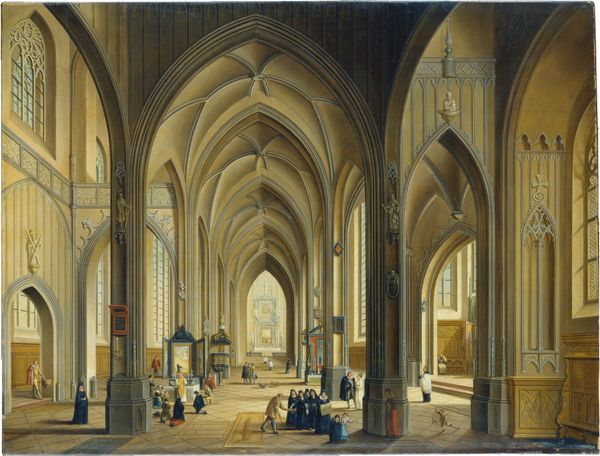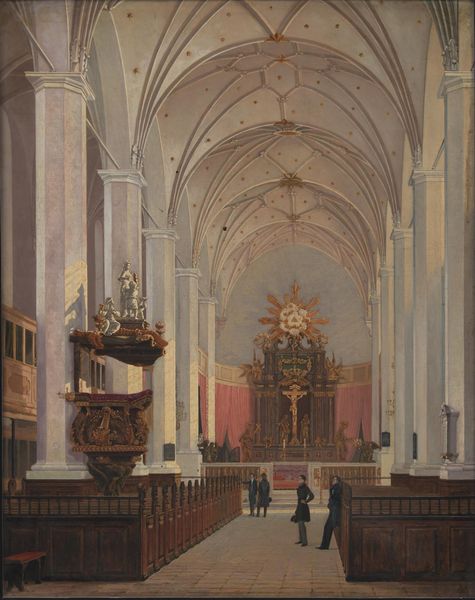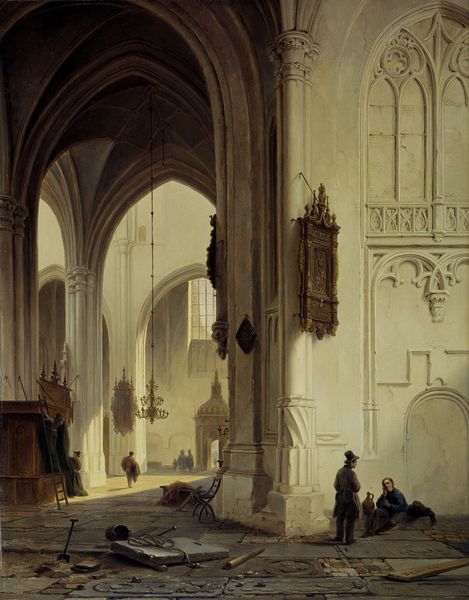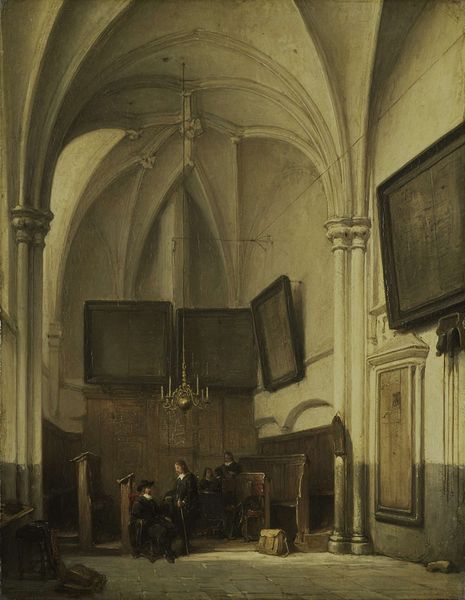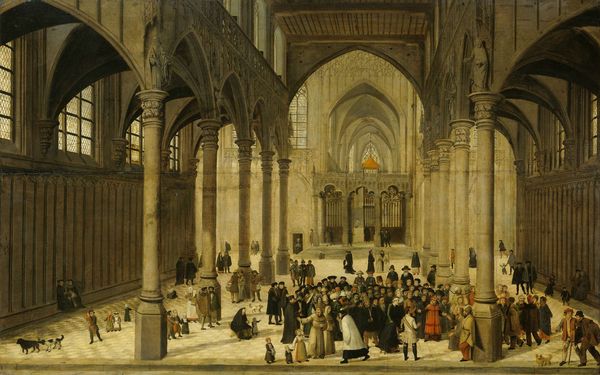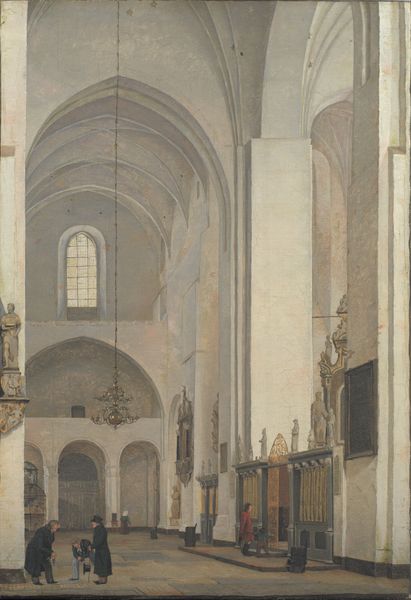
The Ghent Altarpiece by the van Eyck Brothers in St Bavo Cathedral in Ghent 1829
0:00
0:00
painting
#
painting
#
landscape
#
intimism
#
genre-painting
#
history-painting
#
realism
#
historical building
Dimensions: height 101.5 cm, width 81.3 cm, depth 10.8 cm
Copyright: Rijks Museum: Open Domain
Editor: So, this is Pierre François De Noter’s “The Ghent Altarpiece by the van Eyck Brothers in St Bavo Cathedral in Ghent,” created in 1829. I’m struck by how clearly he captures the space. It almost feels photographic. What aspects of this painting grab your attention? Curator: I’m drawn to how De Noter depicts the relationship between art object, architecture, and social context. Consider the very act of painting this scene: it's not just about replicating the Ghent Altarpiece, but about framing it within the cathedral’s physical space and the experience of those viewing it. Think about the labor involved – not only De Noter's but also the artisans who created the Altarpiece and the cathedral itself. How do the materials and construction techniques of each element—painting, altarpiece, cathedral—speak to their respective eras? Editor: That's fascinating! So, it's less about the *content* of the altarpiece and more about how it exists as a product of its time and place? The act of viewing then becomes a sort of commodity? Curator: Precisely! And we should also ask: what’s the function of that reproduction in the Rijksmuseum today? The material reality of this painting invites questions about preservation, display, and how artworks accumulate value and meaning through their circulation. We can appreciate this work not only for its subject, but the materials that produced it. Editor: I never really thought about a painting *about* a painting in this way. It highlights how much labor, material, and social meaning is embedded within what we often just see as "art." Curator: Exactly! Seeing art through a materialist lens urges us to always question how art is made, what social and economic forces shape its creation and reception, and how these factors influence our understanding of its cultural value. It definitely deepens your appreciation of its layers.
Comments
No comments
Be the first to comment and join the conversation on the ultimate creative platform.
